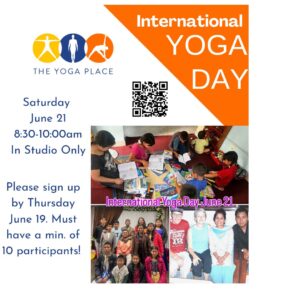The Sprouts from “Embrace Yoga’s Roots”

We have concluded our Summer Book Club with our online discussion. In general, I think that readers were challenged, but curious about the work suggested in “Embrace Yoga’s Roots” by Susanna Barkataki. I know that for me the reflections and ideas within the workbook format will continue.
At the very least, I think everyone who read could agree that work is necessary. Yoga in the West has separated itself immensely from the roots and culture of the subject. The “look of yoga” in the West is a far cry from the spiritual and universal subject matter it claims to be teaching. But the “HOW” of the work is where we individually might differ.
As a student of yoga, it is important to be conscious of what calls us to the practice and why. To “leave parts out” might be just fine, but to be ignorant or dismissive of the whole of the subject and its culture and context can be harmful to its future sustainability and evolution. I think a lot about students who first come to yoga “just for the exercise”, but sometimes years later, come to understand that yoga does touch deeper levels of our being. To not even introduce or teach the entire subject is where the loss of the roots of yoga begins.
As a teacher, then, we must contemplate how we share the subject of yoga in its totality. We have to reflect on what we are stressing in our teaching and how we acknowledge the history and lineage that has carried us into this modern world of yoga. We can embrace change AND embrace yoga’s roots, but how to do it in a way to honor the past and look to the future is important. IF yoga is indeed beyond “time and place”, then there are ways to adjust teaching and sharing for cultural and individual learning styles and not lose the impact of Tapas (disciplined long-term practice), Svadhyaya (self reflection and deep study), and Isvara pranidhanani (surrender to some Divine). As majority white yoga teachers in the West, we can take the time to study the context and history of yoga, and take time to share that with our students when possible. You never know who you might capture with what information.
As studio owners, we can look at our spaces and those we hire and make adjustments when we are able. In Iyengar Yoga specifically, we are limited by the number of Certified Iyengar Yoga Teachers in any one area, so invitations of BIPOC teachers is limited to our smaller pool of CIYTs overall. We benefit from a lineage steeped in the roots of yoga, but that does not mean our population of teachers is any more diverse than any other Western Yoga population – access and privilege are societal issues. With that in mind, approaches that were mentioned in discussion were how studios can open up to those in financial need. This can be tricky as it can be hard for people to ask for help or support to attend a yoga class. Sliding scale payments and options for donations from those who do have the means to share have been some suggestions in order to allow students to “pay what they can” without having to ask for charity.
As community members “off the mat” we also have a duty to do “the work” of embracing yoga’s roots. As individuals acting within our communities, we are representatives of the practice of yoga, so what are we conveying? Within the studio and on the mat, of course, we are there to do our individual practices to transform our own self. Politics and societal woes are not the subject matter of that space, as some concerns were shared in our discussion. However, the Yamas and Niyamas (the first two limbs of the practice of yoga) take us beyond the sticky mat and extend to how we act with those around us. The solution is not always “bringing people in” to your space, but “going to meet” the diversity outside. In reading “Embrace Yoga’s Roots” I was reminded that it is well within my capacity to give time and effort to inform myself and possibly “show up” in my community in ways I never have before. When that happens, inevitably the subject of yoga and yoga teaching will come up, and who knows what could happen!
I know that many efforts are being made within our Iyengar Yoga Community at regional and national levels to explore Diversity, Equity, and Inclusion within our teaching and studentship of the subject. Of course there are many who would like to “just be on the mat” and not be bothered, but I continuously look at the Iyengar family and their example. BKS Iyengar was VERY active in his own local community and the village he came from. He transcended class and caste boundaries with his teaching and travel. He did not “keep yoga on his mat” or to his own self either, thank goodness. He shared far and wide and with all who showed interest despite so many obstacles of time, money, language and culture.
So, maybe the best way to end this blog is another great quote of BKS Iyengar given at his life’s end…”let my end be your beginning…” I believe his legacy, life and practice all held up the roots of yoga. Let Susanna Barkataki’s book not be an end to this contemplation of yoga’s roots, but a beginning to look more closely at our approach to the whole of the subject in this modern age. Can we utilize the reflections as part of our self-study, take action where we can, but ultimately surrender the fruits of whatever work we are able to accomplish? As Susanna Barkataki reminds us, we are not all here to save the world, but we are all here for the transformation and liberation through yoga. So, what sprouts will grow from your roots of yoga?
